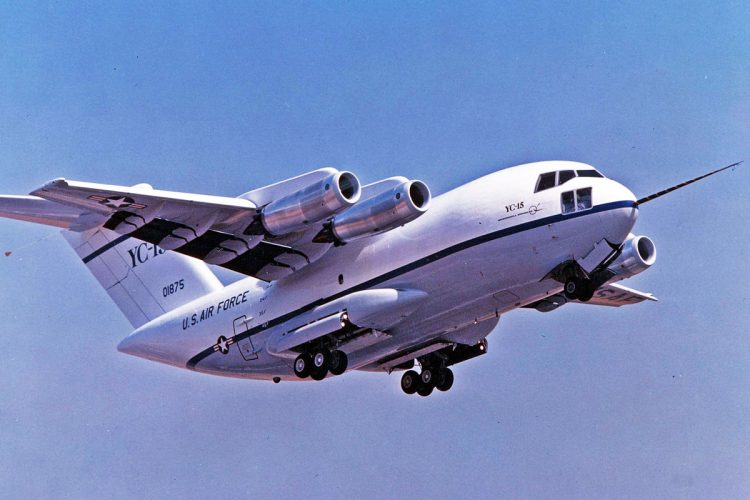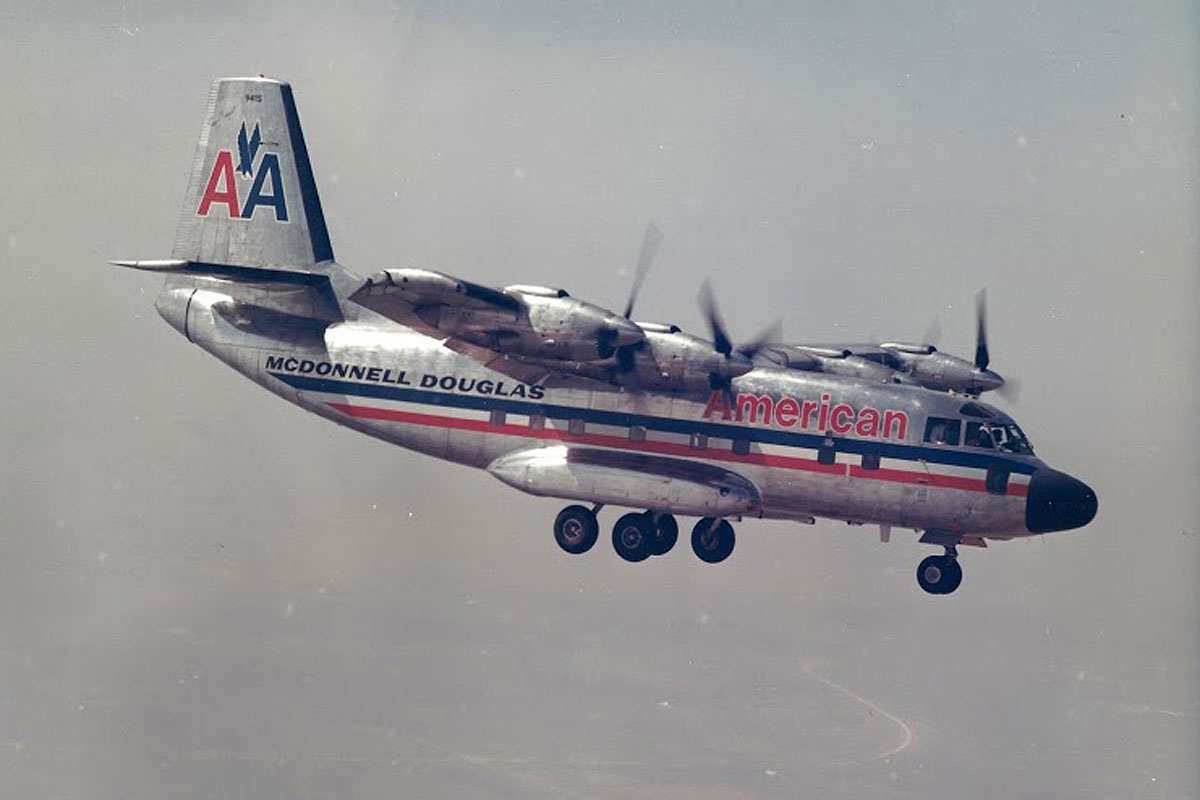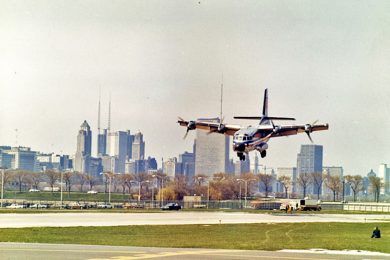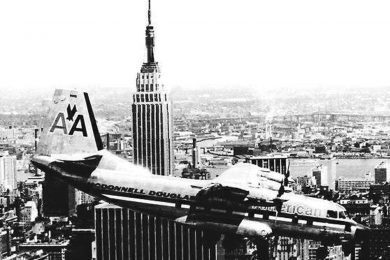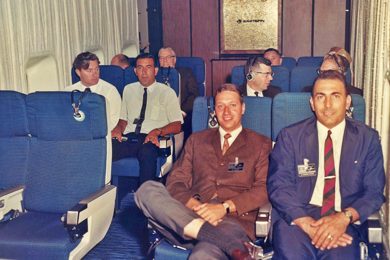Instead of spending hours on the way to the airport, you board an aircraft a few meters from your job and which is capable of taking off in less than 300 meters. It sounds like fiction but that aircraft existed, the Breguet 941.
Designed by the French planemaker created by Louis Breguet (and who would later join Dassault), the four-engine turboprop was designed to provide takeoffs and landings in tiny spaces. To achieve this capacity, the aircraft used a concept of large diameter propellers that covered practically the entire length of the wings with large deflection flaps (up to 100º) that directed part of the air flow to the ground, creating the effect that maximized its support at low speeds.
The result of this combination was an airplane that could take off in just 300 meters and land in an unbelievable 150 meters, or something like two football fields. And the Breguet 941 was not exactly a small aircraft since it could carry up to 64 passengers.
To put the concept into practice, Breguet built the experimental model 940, smaller and that flew for the first time in 1958. After proving its viability, the French manufacturer then went on to the most capable 941, whose inaugural flight took place on June 1, 1961.
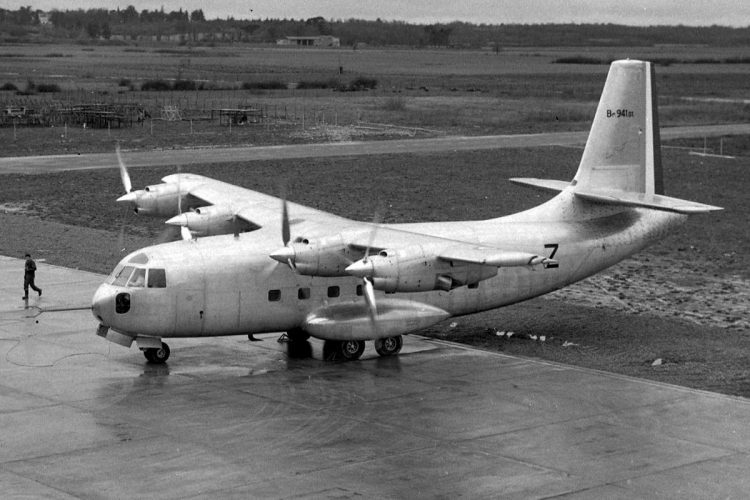
The curious aircraft caught the attention of Americans, who were studying several STOL (Short Take-off and Landing) proposals, and in 1962 McDonnell entered into a cooperation agreement with Breguet to study the concept in depth.
At the same time, the US Air Force sent representatives to Toulouse, the company’s headquarters, to visit the Breguet 941 and assess whether it would be an alternative for the country. Until now, the turboprop was seen as a military transport aircraft, so McDonnell decided to take it to the United States for a series of demonstrations.
Renamed McDonnell 188, the French plane flew to America in 1964 and made aerial presentations at Andrews, Eglin and Wright-Patterson air bases, accumulating over 100 flight hours and 312 landings. However, when under the command of an experienced American test pilot, the Breguet 941 was damaged after an abrupt landing.
After repairs carried out by McDonnell, the turboprop resumed its flights in 1965, being presented to NASA and FAA, the US civil aviation agency. In April of that year, the aircraft returned to France with the impression that the tour had been successful.
In American and Eastern Airlines liveries
On its return to France, Breguet received the news that the government of the country had ordered four aircraft, but of the 941 S version, with a fuselage lengthened by 1.52 m, and that it flew for the first time in April 1967.
However, the US government, despite the good impression during its visit, showed no interest in the project, which made Breguet and McDonnell turn their eyes to the civilian market. After all, its peculiar characteristics would make it a great alternative for short flights operated from small central airports. The idea was carried forward and in July 1968 the Breguet 941 was back in the USA, now sporting the liveries of American Airlines and Eastern Airlines.
For four months, McDonnell 188 carried out 350 flight hours and made impressive demonstrations on small improvised runways. The turboprop became the subject of reputable magazines such as Popular Mechanics that highlighted the proposal to create airports in the downtown areas. According to the publication, the FAA even prepared some rules for this type of operation, which would require runways with a minimum length of 1,500 feet (458 meters) and the capacity to support a maximum weight of 150,000 pounds (68,000 kg).
By the end of the 1960s, jets were beginning to dominate air passenger transport and their operational requirements made airports too large. For this reason, the idea of a STOL plane departing from these small airfields seemed a very sensible proposition.

However, the Breguet 941 was an aircraft of a certain complexity and high maintenance cost. Its powertrain, for example, used propellers that were not directly connected to their respective engines in order to prevent a failure in one of them that could put the aircraft at risk. In its place, the manufacturer developed a system in which all the power generated was distributed equally to all propellers, something seen in helicopters, for example.
At a cruise level at 10,000 meters above sea level, the Breguet 941 reached 450 km/h, but its passenger cabin, which was quite spacious, was not pressurized. Breguet was even studying the creation of a circular fuselage version, the 942, but it did not leave the paper.
Inspiration for other planes
Videos at the time revealed that the Breguet 941 was really impressive. In a few meters, the plane left the ground slowly and landed in a peculiar way, with the nose lowered as if it were hanging on some “invisible hook”.

Despite the successful demonstrations, Breguet and McDonnell were never able to find a customer for the unusual plane. Only the four series airplanes were produced for the French Air Force that used them until 1974, proving that their concept was viable.
The American company, however, participated in a new competition from the USAF for a jet freighter with STOL characteristics. Its concept aircraft, the YC-15 used a flap system similar to the Breguet 941, and later became the well-known C-17 Globemaster III.
Interestingly, the problem that the French turboprop proposed to solve until today remains unsolved, the time and distance needed to board a plane. The most recent technologies, however, are betting on vertical takeoff and landing operations of points within cities. In a way, it can be said that 60 years ago, the Breguet 941, anticipated a future that we will soon see turning into reality.
